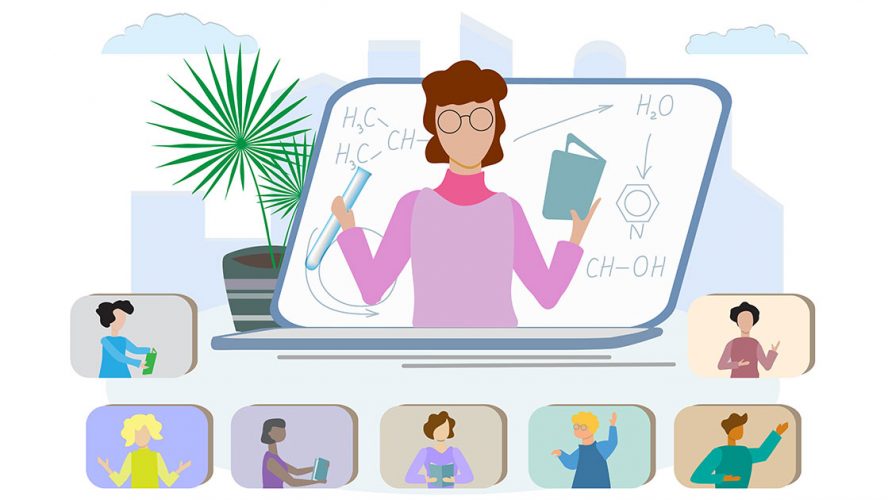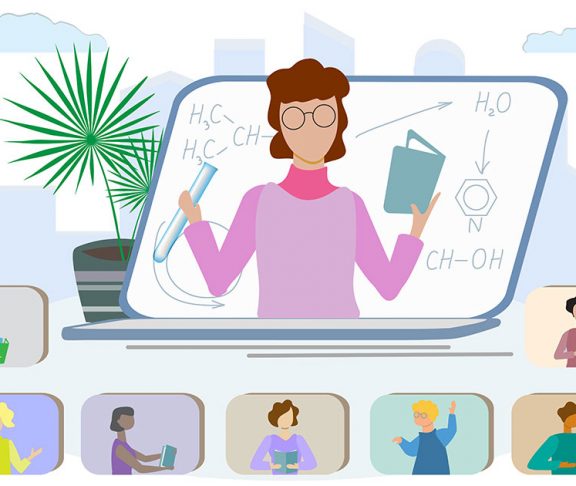For teachers looking for ways to make distance learning more accessible, knowing what technology is available can make a world of difference in reducing the digital divide.
According to Torrey Trust, Ph.D., an associate professor of learning technology at the University of Massachusetts Amherst, “The point of public education is to try to provide equal footing. It doesn’t have to be perfect in this emergency situation, but I want to see educators be creative in these times. Instead of shutting down, use technology as a resource.
“I’m hoping we can shift to Universal Design for Learning (UDL), whether high-tech or low-tech, because it will be so beneficial for making more inclusive learning environments at home, as well as when students get back to the classroom.”
Multiple means of representation
Instructors can offer students the option of watching videos, listening to audio, or reading text using Microsoft Immersive Reader. Students can also engage in virtual tours, augmented reality, and digital 3D.
It’s time to rethink how we empower students to take ownership of their learning.
Finding new ways to keep kids engaged
Flexibility is key when dealing with students who require a more hands-on approach or a project-based activity. Developing a HyperDoc or creating digital documents with links to all the resources a student may need can be effective. Allowing students to use parents’ cell phones to take pictures of their surroundings, which can be emailed to the teacher, is another useful activity.
Thinking outside the box
Teachers should be willing to design open-ended activities where students get to choose how to demonstrate what they know. They can write, create a podcast or video, or bypass technology altogether. For example, students can build a 3D model in Tinkercad or use recycled items to make a model. The bottom line is that multiple means of action and expression are encouraged.
Using openly licensed materials
Educators should investigate resources that are available in the public domain or introduced with a public license. To determine if something is an Open E Resource (OER), they can check for the Creative Commons License. The Mason OER Metafinder, OER Commons, or OASIS database will help find one to fit certain lesson plans. These resources are free and can be tailored to meet specific needs.
Reaching out to students
Teachers should remember that a lot of kids are experiencing anxiety during the pandemic and may need a source of comfort. Whether taking time out for a special video morning or sending them a personalized text or email, letting them know someone cares is essential.
Amusing TikToks or clever memes can help reduce the stress and tension during these difficult times. Whatever the source, most students will appreciate the effort.
Designing for accessibility
Instructors should make sure assigned videos have closed captions. If not, they can create their own. If an audio file lacks transcripts, a student volunteer can develop them. Most apps, including Google Docs, have instructions for making materials used more accessible.
Being in touch with other educators
The International Society for Technology in Education (ISTE) has created a COVID-19 Educator Help Desk to share advice with instructors about online learning, and provide answers to pressing questions. Trust says ISTE Commons is an excellent source to discover what fellow educators are doing.
“Educators need to get connected in these spaces,” she said. “The ideas, resources and tools that are shared is what will inspire your creative thinking and push your teaching to the next level. Educators have been given a difficult challenge, and they are going into these communities online and figuring it out. When they come back to the classroom, I hope that willingness to try technology will come back with them.”



